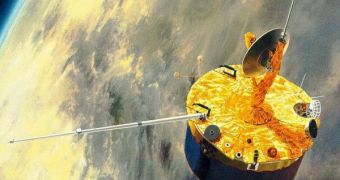By centralizing the results of the latest observations of Venus, astronomers were puzzled to learn that the dynamics of the planet's atmosphere allowed for infrared nightglow emissions of nitric oxide. They mostly used feedback from the Venus Express spacecraft, which, in the end, helped them figure out the cause of the strange phenomenon as well. Apparently, the flow of gas on the planet's surface is directly responsible for these peculiar emissions, which only seem to occur on the night side of the planet.
Experts from Europe and Australia, who published their results in the latest issue of the prestigious journal Proceedings of the National Academy of Sciences, say that the oxide nightglow can only be caused by one thing, namely interactions between nitrogen and carbon dioxide (CO2), which are the two main gases that can be found on the planet. According to the paper, the molecules inside these gases split apart from each other during the Venusian day, only to recombine again on the other side of the planet, where sunlight cannot reach them.
Their recombination yields the nitric oxide, which generates Venus' trademark luminescence. Before the new study, the glow had only been observed in ultraviolet wavelengths, but, with the aid of the sophisticated instruments aboard the Venus Express, infrared observations also became possible.
"An advantage of looking for the infrared air glow emission from nitric oxide is that other molecules also have air glow emission in the infrared so a single instrument can be used to observe multiple molecules. The benefit of looking at multiple altitudes is that we can get information on the chemical and dynamical processes in the atmosphere. Past observations of this part of Venus' atmosphere, for example, have suggested that the dynamics (winds) on Venus can change greatly if you look just 10 kilometers higher or lower," says the co-author of the new paper, Dr Frank Mills.
"This is certainly of great help to get an insight into the dynamics and mixing of Venus' atmosphere," adds Garcia Muñoz, an astronomer at the Australian National University, and the lead author of the report.

 14 DAY TRIAL //
14 DAY TRIAL //